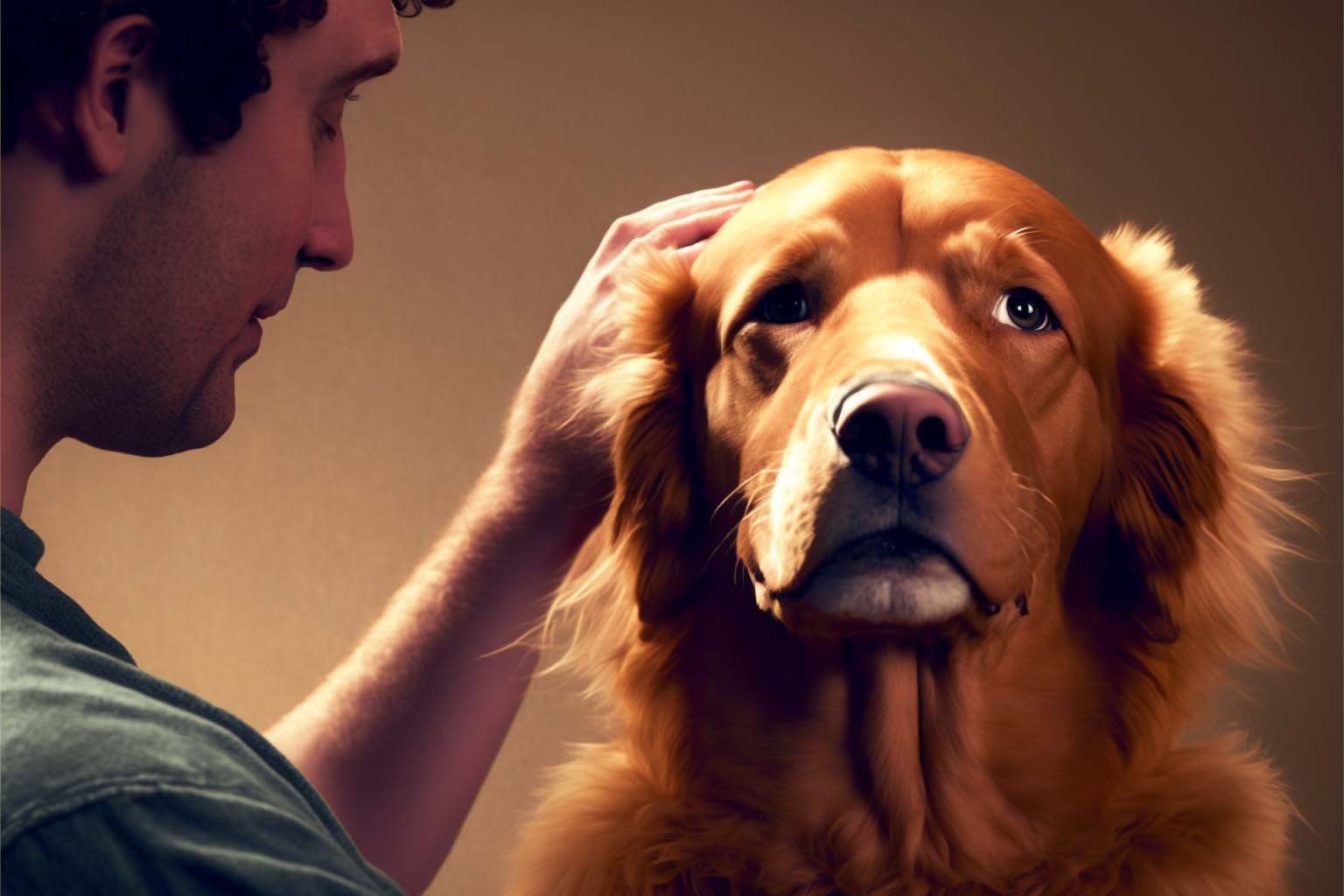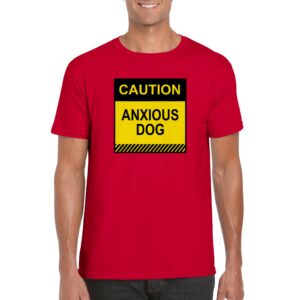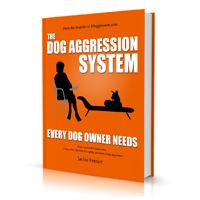Your cart is currently empty!
[VIDEO] What Everyone Ought to Know About Petting Dogs

If we like dogs, we love to pet them. And we take it for granted that dogs like being petted, too. In fact some studies show that pet petting can be relaxing for both animals and humans. But do all of them love it? Do they always enjoy it every time? How can we tell? Here is what you ought to know about petting dogs:
Not all dogs enjoy being petted!
Not all dogs enjoy petting and not all dogs enjoy it all the time. Some dogs only enjoy being petted by some people only some of the time.
Studies show that many common interactions we have with dogs are sometimes perceived as unpleasant such as petting and holding dogs around their heads. These conclusions were based on measuring well-known indicators of well-being in dogs such as certain behaviors and changes in heart rate. Read one study here: Behavioral and cardiac responses by dogs to physical human–dog contact
However, if you and your dog enjoys petting, you and your dog will start to produce oxytocin which is known as the “bonding” hormone called oxytocin It is also produced when women give birth and breast feed and is considered one of the main reasons why new mothers bond with their babies and why cuddling makes couples feel closer. Research also suggests that oxytocin might be beneficial for aggressive dogs because oxytocin makes us more trusting and less aggressive.
But because not all dogs enjoy petting, petting can actually be irritating and even stressful for dogs. Dogs that may enjoy petting when they are relaxed might find it annoying when they are under stress like when they are in pain, or when there are strangers or children or strange dogs around.
Unfortunately, many dog owners only realize their dogs don’t like petting after their dog has growled or bitten. Research suggests that “tactile contact with a dog increases approximately 20 seconds before a bite” on average. (Read the study here: Online videos indicate human and dog behaviour preceding dog bites and the context in which bites occur )
How can you tell if your dog isn’t enjoying being touched?

Even when we are not particularly great and reading cues from dogs, there is a simple way to find if your dog is enjoying being petted by doing what we call the “consent test”. It’s so simple that it can (and should) be taught to children.
The Consent Test
With a dog you are relatively sure won’t bite:
- Ask the dog owner if you can pet the dog
- Ask the dog by:
- Pet the dog for a moment
- Stop and stand back
- Observe what the dog does in response to your backing off.
- Discontinue or continue based on what the dog is communicating
If the dog does nothing when you step back he or she probably doesn’t like it!
You may be skeptical or think your dog is special in this way, but don’t dogs always make it clear when they want something?
Signs that you should discontinue petting a dog
Not all dogs will warn you they don’t like being petted, especially if there is a history of people ignoring the warning signs or they are stressed. But in most cases dogs give us clear signs that we should give dogs space. The following responses are some of the signs that tell us that a dog needs their space. When you stop petting, the dog:
- Does nothing to encourage you to continue. Stop. The dog is merely tolerating petting. Find another way to interact.
- Turns his or her head away from the person in response to being touched. Stop. The dog doesn’t like it and doesn’t want to be rude.
- Backs up or moves away a step. Stop. The dog doesn’t like it and letting you know.
- Licks his or her lips or yawns. Stop. The dog may be a little stressed or anxious or feeling conflicted.
- “Freezes” (stops moving anything including eyes, ears). Stop immediately and give the dog space.
- Pulls back ears or positions ears oddly. Stop petting immediately and give the dog space.
Some dogs can even become aggressive when you touch certain areas of their bodies, such as:
- the top of their head
- their back.
- their paws
- their tail
The biggest predictor of a bite maybe how the dog is holding their ears. If their ears are in a non-neutral position, you should stop what you are doing immediately.
Signs your dog enjoys petting
Dogs that like petting and human contact make it obvious. They look at you pointedly when you stop or they might nudge you for more or even whine. You know the kind. That dog that has pegged you for a sucker and knows you are the guest at the party that will pat him all night long. Always remember dogs communicate through their body: they will always make it obvious when they want more attention.
Note the overall state of the dog: Do they seem keyed up, stiff, tense or energetic or are they loose and relaxed? Here are some obvious signs they enjoy petting:
- Looks at you when you stop petting as if to say why did you stop – but you need to be sure they are looking at you for this reason alone, and not because they want something else, like food or a walk.
- Waits for more and whines when you don’t give more, (they will eventually look at you or make it more obvious, so if you are not sure, just wait it out)
- Paws at you
- Nudges you or your hand or puts their body where you hand has to pet them
- Leans on you
- Sits very close next to you
- Their face is relaxed. Their eyes might look sleepy or half closed
However, it’s good idea to do the consent test periodically throughout an interaction in case the dogs feelings have changed. Dogs can have enough of affection just as humans can. Dogs may also enjoy being touched for only a short time.
What happens when a dog gives mixed signals?
Surprisingly, dogs can have mixed feelings the way we can about things, and they may have mixed feelings about being touched. They might approach you for attention, but then take a step back when you try to pat them. They may want interaction, but not enjoy being touched or the way they are being touched. The video below demonstrates a dog that is conflict about being touched. You can see that she is a little “antsy”. She wants something, but she doesnt appear to be relaxed by the touching. Instead it seems she is just tolerating it.
If your dog is behaving in a neutral fashion, ambiguous or confusing fashion accept that your dog is likely feeling this way, too and error on the side of caution and find another way to interact.
If you think your dog only tolerates petting (and is not aggressive to people in these conditions) try the consent test or ask guests to try it (assuming that you feel confident the dog will not growl or bite) Explain that your dog doesn’t like being touched usually and the consent test is our way of being a detective.
“Dog Detective”
Children in particular seem to enjoy being a detective not only does it lets them get to know the dog better, but it helps develop empathy and teaches them about dog communication. But it’s not just children who enjoy it. Most people appreciate learning to understand animals better.
The following video gives you some actual examples:
Other ways to interact with dogs that don’t like being petted
Sometimes dogs just want alone time like the rest of us need from time to time. But dogs that don’t enjoy being petted are necessarily rejecting you. It’s important to keep in mind that dogs don’t necessarily interact with each other through a lot of touching. Sometimes it’s just plain irritating or stressful for them. Some dogs are highly touch sensitive and would rather just sit beside you with a side resting against you.
Often dogs want different kinds of interaction. Sometimes they will want:
- To play tug of war
- Have a ball tossed for them
- Go for a walk
- Engage in a game of chase
Children at reading age can be taught to read to dogs. If the dog is comfortable in the presence of a child, a child might enjoy reading a book to them. This allows the child to engage without touching or staring at the dog. SUPERVISION IS ALWAYS REQUIRED. Never assume that even the most well behaved child can resist touching a dog. All children have difficulty in accurately assessing or even understanding risks.
Teaching a dog to sit for a treat – assuming the dog is not wary of children or strangers can be very rewarding for all.
If the dog is comfortable with people only a certain distances, the person can still ask the dog to sit while the owner provides the treat.
Positive training is a great way to interact and develop a bond with your dog
Assuming your dog doesn’t have aggression issues with people, an excellent way to interact with your dog is to do positive training with them. Simple things like sitting for a treat, or getting a treat for coming when can special word is used can be very enjoyable for both.
If your dog can do this already, consider doing more advanced training.Training methods such as clicker training be enjoyable and so much fun for both once each get the hang of it, and no one is forcing the dog to do anything. Clicker training provides a mental challenge for dogs and the rewards keep it enjoyable. It’s not necessary to spend a lot of time doing this, either.
This is an excellent idea for high energy dogs or dogs that could benefit by being tired out, or by learning how to relax in particular.
Either way, any situation where people simply can’t resist touching dogs, it is wise to incorporate the consent test. Teaching others that animals do not always like to be petted, especially children can go a long way towards reducing unexpected bites.
How to touch dogs that don’t like to be touched
Generally we always want to respect a dog’s need for space.
But sometimes you have no choice and you need to touch a dog, for reasons such as grooming, putting on a head halter or muzzle, when you need to attach a leash to their collar or file or trim their toenails.
In this case a good and properly executed behavior modification program that includes relaxation and desensitization is necessary to minimize risk of aggression. However, if this is not taught and managed carefully we can make the situation worse.
It is essential to minimize anxiety
The key is not creating a scenario where you cause your dog to become overly anxious and this can be tricky to read. The state of anxiety feels so bad, that it’s possible to become anxious about being anxious. The more this happens, the more that we or they will do anything to avoid it.
So it’s important to teach and reward your dog for being relaxed. Once they can do this on cue, you need to break down the steps of being touched into much smaller steps. For example, even before you touch the dog, you might reach out for them, or perhaps you get their collar, or even put on your shoes. As each step progresses you will have to teach your dog to relax and repeat it often enough that your dog starts to be calm instead of worried at that step. Obviously if a dog is too worried then you will not be able . encourage them to relax which is why we need to break the whole thing into small pieces.
Consulting a professional
If you are not confident you know how to do this properly, it’s a good idea to consult a good and qualified dog trainer who uses only positive methods and is excellent in reading and responding to dogs’ body language to teach you.
ADVERTISEMENT
The Dog Aggression System Every Dog Owner Needs E-book

Anxious Dog Shirts only available in our shop

Keep people away with our Stand back shirts
ADVERTISEMENT
ADVERTISEMENT
Tags:

